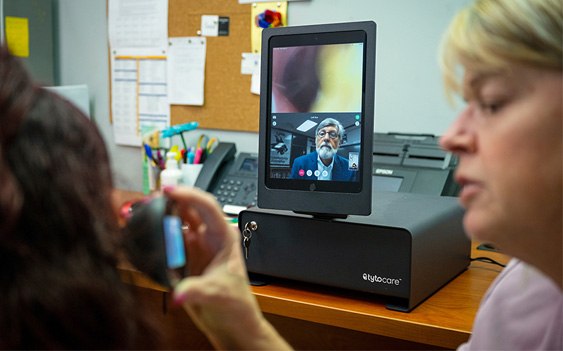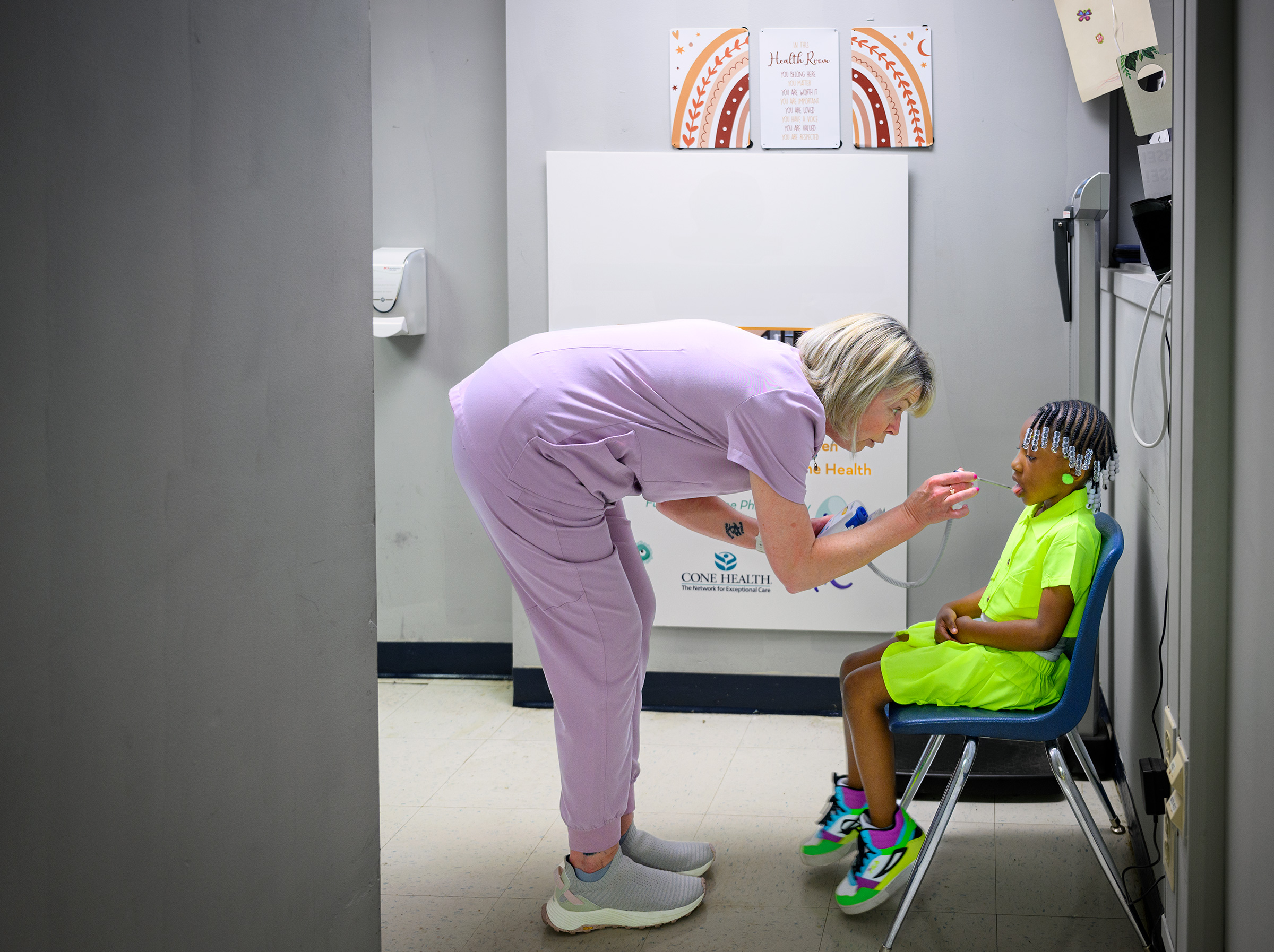Investing in students in new and collaborative ways
With telehealth, we’re beginning to unlock their potential — and our own.
Contrary to common belief, telemedicine not only matches the quality of an in-person visit — often it’s even better. More people participate in the child’s care. State-of-the-art technology allows us to provide a more detailed view of what’s going on. And test results and medical records can be shared easily with primary care and specialty physicians. Telehealth holds exciting promise for improving health and academic outcomes, and that’s something that should excite us all.

We get to know students and their families
Unlike traditional or primary physicians who typically see a child only once or twice a year, with school-based telehealth, we have the opportunity to develop a deeper understanding of the child and their family through multiple interactions. This is particularly effective in the public school setting, where education takes a holistic approach in order to care for the overall well-being of the child. Schools provide a safe and trusted environment that addresses a range of needs for families that go beyond education, including nutrition and emotional support. This requires knowing students extremely well and coordinating services to ensure their health and success.
Schools host children 6-7 hours a day, 197 days a year, and therefore, play a huge part in a child’s life. Telehealth presents an opportunity to be in the right place at the right time to make a lasting and positive impact for students.
Access isn’t about a one-size-fits-all approach.
It involves listening, observing and responding in ways that truly make a difference.
When planning for school-based telehealth in new areas, we closely examine what families need based on their unique circumstances. For some, access to the nearest care provider requires a 30- to 45-minute drive, the family shares one car, they have a long commute to work or farming responsibilities prevent them from being available for their children in the mornings. Other families juggle multiple hourly jobs, care for ill or disabled relatives, or they’re working toward a college degree. These factors significantly impact their ability to balance work and life demands.
School-based telehealth aims to improve access — and access looks different in different scenarios. It can involve solving the need for internet connectivity, translators and other special services. It may require additional technology or more hands on deck. As schools make the effort to launch telehealth, we’re here to provide support and guidance to ensure success.
A Better Exam
Telehealth’s cutting-edge technology gives us advanced capabilities for delivering comprehensive care and allows both doctor and parents to see medical issues up close, despite being miles away.

- Two-way, live audio and video enables multiple people to be present for a virtual visit — the parent, a healthcare provider, the on-site facilitator and more.
- A digital otoscope examines the ear canal and eardrum and can record and save video footage.
- An interactive, digital stethoscope captures heart and lung sounds with unsurpassed quality in real time. We’ve even been able to diagnose a significant heart condition in one child and get them to a specialist right away, with a heart sounds recording in hand.
- A dermatology camera diagnoses skin rashes, lesions, infections and inflammation for quick treatment.
- Doctors can write prescriptions that are available for pickup right away.
- All images taken during the televisit can be stored in the student’s medical record and shared with the primary care physician or a specialist.
We connect more people in a visit
A child’s teacher, the school nurse, a doctor, a parent, interpreter services if necessary — telehealth allows us to form a web of support for students like never before.
Without telehealth, missed class time quickly adds up. With it, if a student experiences a sore throat, cough, stomach pain or any other kind of ailment, they can visit their telehealth clinic, which functions as an on-site pediatric urgent care. There, a telepresenter, either a trained Certified Medical Assistant (CMA) or Licensed Practical Nurse (LPN), or the school nurse conducts an initial fact-finding. Then they then facilitate a virtual visit with the student, their parents and a physician. This collaborative care team works in tandem with school nursing.
“The school nurse being involved in the students’ care is revolutionary.
They know the family, the environment and that four kids in that class went down with the flu.”
Amanda North
Executive Director, Center for Rural Health Innovation

